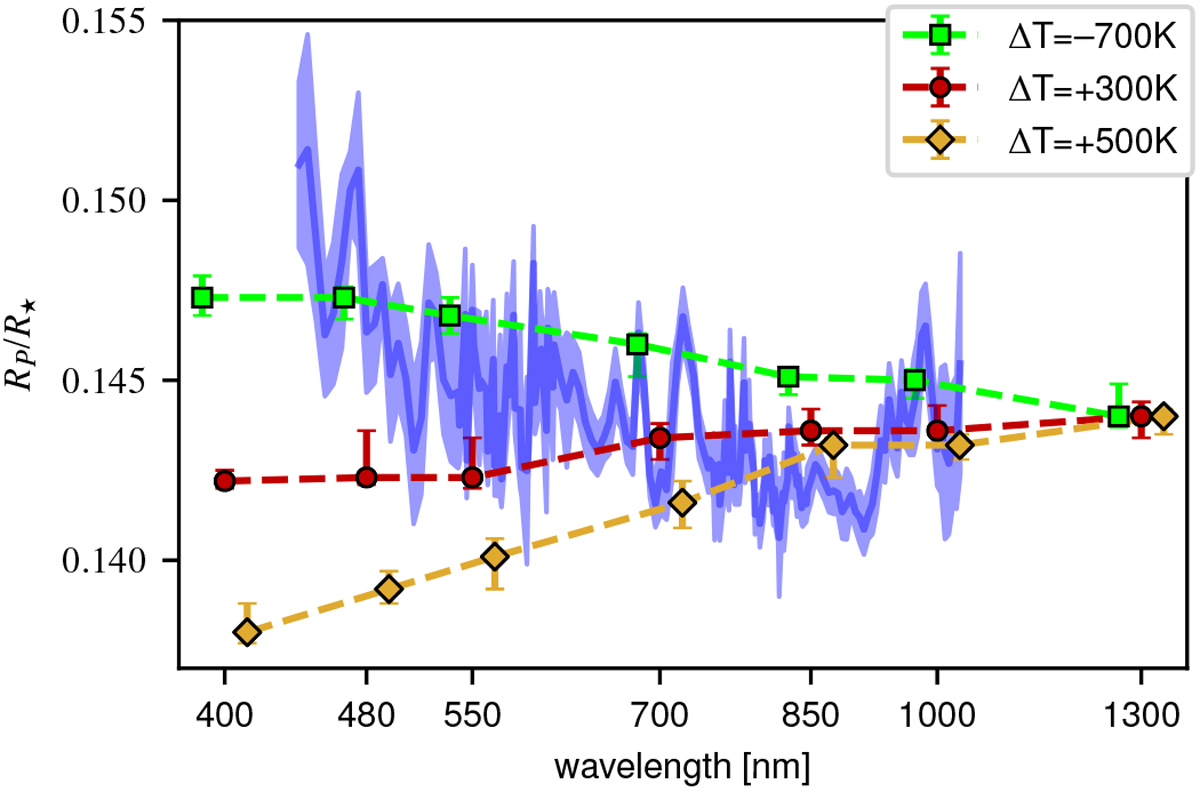Fig. 2

Retrieved transmission spectra through chromatic RM of atmosphere-less planet similar to WASP-19. A dark spot causes the planet to look large at shorter wavelengths, which is similar to what one would expect from a hazy atmosphere in a planet that causes a Rayleigh scattering slope. Nevertheless, the slope of observed data from Sedaghati et al. (2017), shown in blue, still seems to be steeper than our simulations. A bright region causes the planet to look smaller at shorter wavelengths.
Current usage metrics show cumulative count of Article Views (full-text article views including HTML views, PDF and ePub downloads, according to the available data) and Abstracts Views on Vision4Press platform.
Data correspond to usage on the plateform after 2015. The current usage metrics is available 48-96 hours after online publication and is updated daily on week days.
Initial download of the metrics may take a while.


